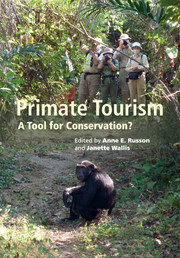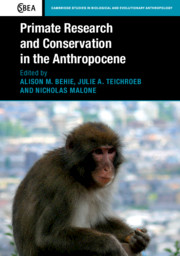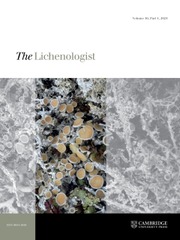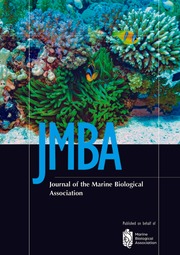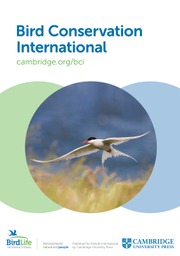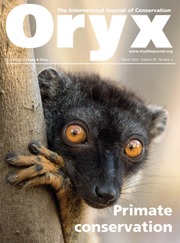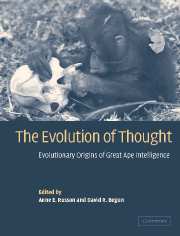Primate Tourism
Primate tourism is a growing phenomenon, with increasing pressure coming from several directions: the private sector, governments, and conservation agencies. At the same time, some primate sites are working to exclude or severely restrict tourism because of problems that have developed as a result. Indeed, tourism has proven costly to primates due to factors such as disease, stress, social disruption, vulnerability to poachers, and interference with rehabilitation and reintroduction. Bringing together interdisciplinary expertise in wildlife/nature tourism and primatology, experts present and discuss their accumulated experience from individual primate sites open to tourists, formal studies of primate-focused tourism, and trends in nature and wildlife tourism. Chapters offer species- and site-specific assessments, weighing conservation benefits against costs, and suggesting strategies for the development of informed guidelines for ongoing and future primate tourism ventures. Primate Tourism has been written for primatologists, conservationists and other scientists. It is also relevant to tourists and tourism professionals.
- Weighs the benefits of and risks posed by wildlife tourism to the conservation of primates, looking at case studies of individual sites and groups as well as examining the overarching trends affecting all primate species
- Gives recommendations for enhancing the contribution of tourism to conservation alongside best-practice guidelines for minimizing and controlling potential harm caused by visiting parties on primate habitats and health
- With balanced assessments by experts from around the world, this text is of benefit and interest to not only researchers and conservationists but also tourists and tour organizers
Reviews & endorsements
"Primate Tourism gives an excellent overview of the experiences with primate tourism, the positive and negative effects, and it provides recommendations for the solution of the problems."
Gorilla Journal
"… this volume stands out in the breadth and depth of its studies and recommendations while providing much-needed perspective on the scope of the challenges facing primate tourism."
Primates
"The book illustrates well the complexity and diversity of primate tourism and its effects on primates, showing the difference in tourist settings, the variation across primate species in how they respond to tourism, as well as the difficulty more generally in assessing the impacts of primate tourism because of the different time scales over which these might occur … currently the most comprehensive book about primate tourism, which excellently presents the current state of knowledge of this poorly studied field … this book will be of great use for anyone interested in primate tourism, from researchers to students to tourism professionals. It is a must-have in your library."
Laëtitia Maréchal, Primate Eye
Product details
September 2014Adobe eBook Reader
9781316056028
0 pages
0kg
50 b/w illus. 22 tables
This ISBN is for an eBook version which is distributed on our behalf by a third party.
Table of Contents
- List of contributors
- Part I. Introduction:
- 1. Reconsidering primate tourism as a conservation tool: an introduction to the issues Anne E. Russon and Janette Wallis
- Part II. Asian Primates:
- 2. Tourism, infant mortality and stress indicators among Tibetan macaques at Huangshan, China Carol M. Berman, Megan D. Matheson, Jin-Hua Li, Hideshi Ogawa and Consuel S. Ionica
- 3. Provisioning and tourism in free-ranging Japanese macaques Hiroyuki Kurita
- 4. Proboscis monkey tourism: can we make it 'ecotourism'? Heathor C. Leasor and Oliver J. Macgregor
- 5. Orangutan tourism and conservation:
- 35 years' experience Anne E. Russon and Adi Susilo
- 6. The impact of tourism on the behavior of rehabilitated orangutans (Pongo abelii) in Bukit Lawang, North Sumatra, Indonesia David F. Dellatore, Corri D. Waitt and Ivona Foitova
- Part III. African Primates:
- 7. Lemurs and tourism in Ranomafana National Park, Madagascar: economic boom and other consequences Patricia C. Wright, Benjamin Andriamihaja, Stephen J. King, Jenna Guerriero and Josephine Hubbard
- 8. Some pathogenic consequences of tourism for nonhuman primates Robert M. Sapolsky
- 9. Baboon ecotourism in the larger context Shirley C. Strum and Deborah L. Manzolillo Nightingale
- 10. Mountain gorilla tourism as a conservation tool: have we tipped the balance? Michele L. Goldsmith
- 11. Evaluating the effectiveness of chimpanzee tourism James S. Desmond and Jenny A. Z. Desmond
- Part IV. Neotropical Primates:
- 12. The impact of tourist group size and frequency on neotropical primate behavior in Tambopata, Peru Chloe Hodgkinson, Christopher Kirkby and Eleanor J. Milner-Gulland
- 13. Interactions between tourists and white-faced monkeys (Cebus capucinus) at Manuel Antonio National Park, Quepos, Costa Rica Laurie Kauffman
- 14. Effects of tourism on Ecuadorian primates: is there a need for responsible primate tourism? Stella de la Torre
- Part V. Broader Issues:
- 15. Economic aspects of primate tourism associated with primate conservation Glen T. Hvenegaard
- 16. Considering risks of pathogen transmission associated with primate-based tourism Michael P. Muelhlenbein and Janette Wallis
- 17. Guidelines for best practice in great ape tourism Elizabeth A. Williamson and Elizabeth J. Macfie
- Part VI. Conclusion:
- 18. Primate tourism as a conservation tool: a review of the evidence, implications, and recommendations Anne E. Russon and Janette Wallis
- Index.

